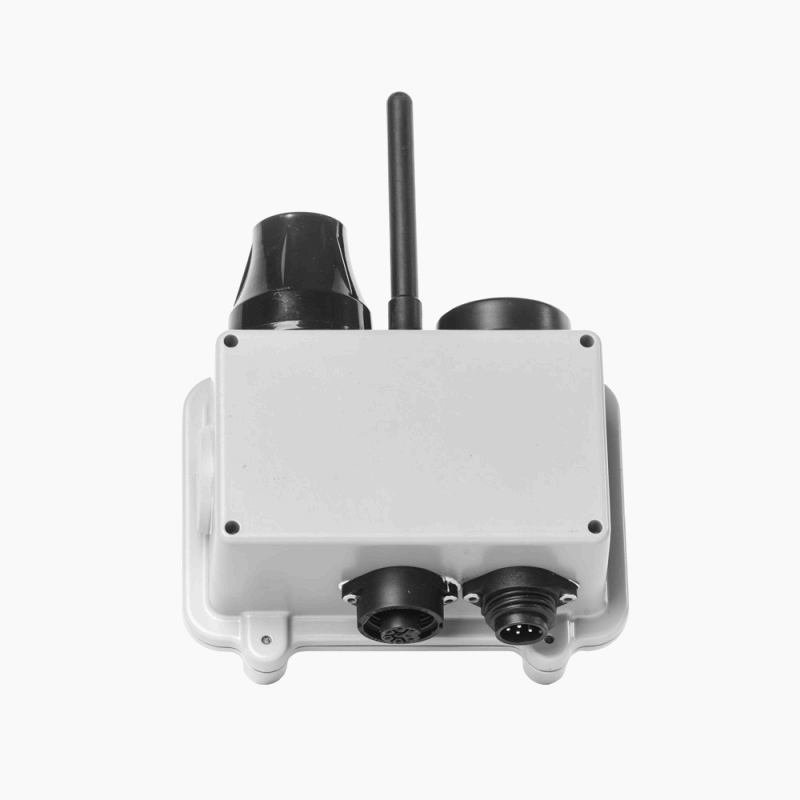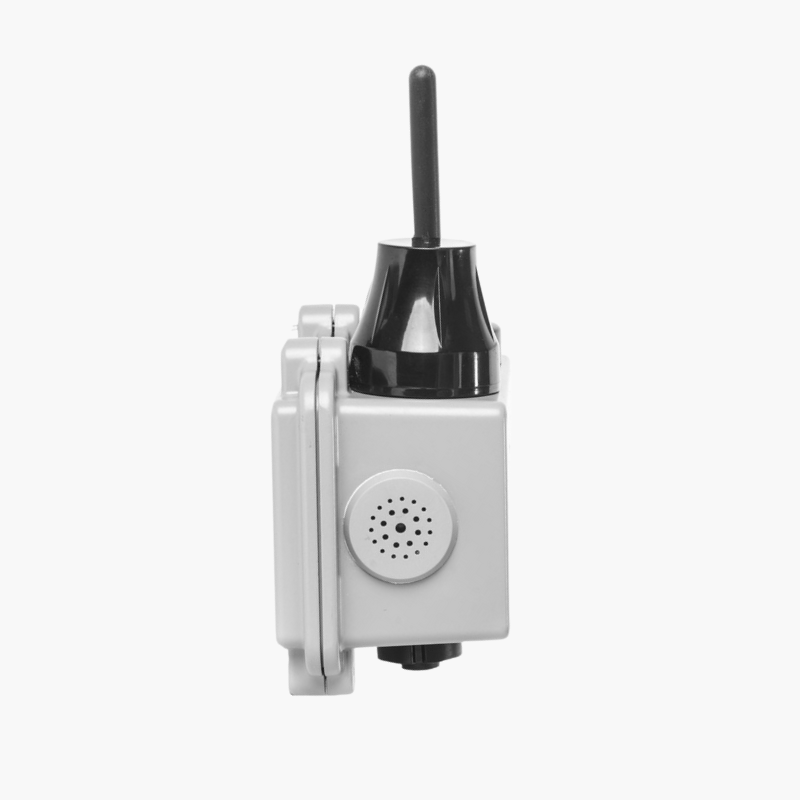List of products
Files to download
General catalog card PTA
Technical data sheet PTA
Pictures
PTA
Professional Telematic Alarm



We have been working with transport companies in the Automotive Telematic branch for several years and certainly we can tell we understand the problems of our customers. To solve the main ones we have created an innovative device: a hybrid of a car alarm and a telematics device, which is intended for use in semi-trailers and truck trailers. What is the outcome? Security and access to a number of crucial information obtained from semi-trailers ensure an unprecedented level of support and safety of the supply chain.
Based on the knowledge gained during several years of work with devices mounted on semi-trailers, we have decided to focus on a premium class solution. The highest quality components will cope even with extremely unfavorable working conditions. Advanced alarm and logistics system will meet the expectations of the most demanding users.
Professional Telematic Alarm (PTA) is a homologated device designed for installation in truck trailers. Regardless of the state of the main power supply, the terminal continuously performs two most important functions:
- Anti-theft protection of the vehicle and the transported cargo, e.g.: *
- alarm arming/disarming control,
- control of connecting/uncoupling the tractor to the semi-trailer,
- control of the movement of the semi-trailer with the tractor disconnected,
- monitoring the opening of the cargo space,
- control of the fuel filler in the cooling tank,
- checking the opening of cargo boxes.
In the event of a violation, the alarm siren is being activated and the appropriate information is sent via GSM network.
* Depending on the type of additional security devices installed (e.g. opening sensors, motion sensors, digital seals and customs cords).
- Supporting logistics processes through access to a lot of information obtained from the vehicle, e.g.:*
- geolocation of journeys and stops,
- vehicle speed,
- information about incidents, e.g. opening the loading door, disconnecting the tractor, opening the loading boxes,
- control of engine working hours (e.g. cooling unit),
- temperature control in the cargo space,
- VIN number,
- status of the semi-trailer counter,
- axle loads.
* Tools supporting logistics processes depending on the functionality of the application which downloads information from the PTA terminal.
Maintaining the continuity of the PTA terminal operation is possible thanks to the design of the proprietary buffer power supply system. It enables correct operation of both the terminal and additional safety devices (complete semi-trailer protection system) with the semi-trailer disconnected from the tractor.
The information obtained by the PTA terminal is transferred via the GSM network directly to the end user (via SMS with a limited amount of information). Also by using a full, open communication protocol, information is transferssed to the indicated address of the server receiving and processing the obtained data (Internet transmission of the GSM network).
The PTA kit includes:
- Main board of the central unit designed from scratch by our engineers, performing most of the functions necessary in the security and logistics process.
- Add-on expansion module board with specialized add-on functions to quickly adapt the PTA to individual, non-standard deployments.
- Aluminum, hermetic, reinforced housing that meets the necessary requirements for proper operation of electronics in extremely unfavorable conditions outside the semi-trailers.
- Specialized industrial connectors, external GPS/GSM antennas and a hermetic alarm siren built into the body of the housing guarantee a tight and durable monolithic construction.
- Connection bundles secured with polyamide conduits terminated with screw plugs, enabling efficient installation in the vehicle.
- Keyfob controlling the alarm functions of the terminal.
- Sound notifications of alarm status (e.g. armed, disarmed, line violation, service status).
- The sound signal after detecting an alarm incident lasts 30 seconds and turns off. Optionally, you can program the number of repetitions of the sound signal.
- Arming the alarm via the keyfob or sending an SMS.
- Remote arming:
- After the first activation, the alarm is armed immediately, informing about the correct arming with a sound signal.
- If one of the alarm lines is violated (input C_01 or C_02 in a high state: e.g. opened loading door), the alarm will not be armed, informing about this event with a sound signal - the so-called failed attempt to arm the alarm.
- It is possible to activate an alarm when the alarm line is violated. The alarm should be reactivated within 6 seconds of the audible information about the failed arming attempt (e.g. arming the alarm with the loading door open).
- Re-arming of the alarm after being accidentally disarmied. If the alarm has been disarmed and there is no change in the status of the alarm inputs for 10 minutes (e.g. opening the loading door, disconnecting the tractor), the alarm will be armed again, confirming it with a sound signal.
- Programmable auto-arming function. After the alarm has been disarmed, it will be re-armed after the programmed delay time (not less than 10 minutes from disarming).
If, after the programmed delay time (10 minutes by default), the terminal detects a high state on the C_01 or C_02 input line (e.g. opened loading door), the alarm will be armed without these signals.
If the C_01 or C_02 input lines change their state to low, the alarm will arm the previously inactive line after 5 minutes (so-called alarm rearming). - Programmable Panic Button or Silent Alarm function. Holding the button on the keyfob for 5 seconds activates one of the selected functions:
- Panic Button turns on the alarm siren for 30 seconds and sends alarm information according to the programmed rules.
- Silent Alarm sends alarm information according to the programmed rules (the siren is not activated).
Both functions do not change the logical state of arming/disarming the alarm.
- System power supply from +7V to +36V.
- Average current consumption tested with the following assumptions:
- no power supply to external components from the W_02 output,
- inactive alarm siren,
- charged buffer power batteries:
- active mode (main power is on):
11.8mA +/- 5% for Us=25.4V, - sleep mode (lack of main power):
9.5 mA +/- 5% for Us=4.2V, - battery charging mode (2 pcs.):
235 mA +/- 5% for Us=25.4V.
- active mode (main power is on):
- Operating temperature from -30⁰C to +70⁰C.
- 7 inputs permanently assigned to specific functions.
- 3 universal inputs controlled by ground or plus.
- 1 ground controlled output.
- Internal humidity and temperature sensor (electronic status control).
- Two-way radio line 868.35MHz (keyfob and wireless input module supported).
- Support for optional input expansion module:
- Dallas 1-wire temperature measurement (up to 4 thermometers),
- pulse input (engine speed or pulse counter),
- CAN reading input,
- RS485 input.
- Aluminum housing, powder coated.
- Dimensions
- Dimensions without antennas:
- height: 102mm,
- width: 150mm,
- depth: 75mm.
- Dimensions with antennas:
- height: 205mm,
- width: 150mm,
- depth: 75mm.
- Dimensions without antennas:
- Sealing class: IP67.
- Weight: 800g.
- Aluminum housing, industrial die-cast.
- IP67 protection class.
- Possibility of using an additional anti-interference gasket.
- High resistance to mechanical damage.
- Powder coated housing, colors in RAL 7014 standard (grey). Optionally, it is possible to order a different color of the housing and a dedicated logo.
- Industrial connection sockets (2 pcs.) made of high-class polyamide, ensuring IP 67 tightness and high mechanical resistance.
- Case opening controlled by an internal sensor always generates an alarm (regardless of the alarm arming status). It can be opened after putting the terminal into service mode.
- Internal control of air temperature and humidity provides immediate information in the event of overheating or moisture (unsealing).
- External GPS antenna mounted on the housing:
- frequency 1575.42 MHz,
- impedance 50 Ohms,
- current 10 mA DC,
- polaryzacja RHCP,
- V.S.W.R. 1,5dB,
- gain 28dB,
- working temperature from -40⁰C to +85⁰C,
- waterproof.
- External GSM antenna mounted on the housing:
- frequency: 824~960 MHz/1710~1990 MHz, 1920~2170 MHz,
- VSWR≤2,0:1,
- gain: 2dBi,
- impedance: 50 Ohms,
- waterproof.
- Original buffer power supply system ensuring power supply of the entire safety system also when the semi-trailer is disconnected from the truck tractor (no main power supply).
- Support for one or two li-polymer batteries (up to 6000mAh each).
- Two batteries 5300mAh each are used as standard.
- Independent charging of each battery (different battery charge levels are allowed when connected to the terminal's buffer system).
- Batteries resistant to low and high temperatures: from -20⁰C to +60⁰C.
- Continuous monitoring of battery consumption (sent in each record).
- Low battery alerting (send information in the record).
- Low battery alerting (send information in the record).
- Single-function keyfob (one button).
- Arming / disarming the alarm.
- Information on low charging battery level (LED).
- Communication with the terminal with a 32-bit random code system.
- Possibility to use three keyfobs for one alarm.
- Alarm siren built into the terminal housing.
- Sound frequency: 3kHz.
- Volume: 104dB.
- Sealing class: IP67.
- Towing the vehicle.
Trailer movement. An incident when there is no signal to connect the tractor unit (ABS / EBD plug disconnected). - Vehicle tilt.
Changing the position of the terminal by 2 degrees from the stored position when the alarm was last armed.
- Permanent connection of the casing (siren not activated only in the service state).
- Control of the maximum level of humidity (e.g. intentional unsealing).
- Disconnecting or cutting any connecting wire from the instant alarm terminal (so-called line sabotage).
- 3D sensor alarm in case of terminal disassembly.
All the above information is also sent in a record on the server.
- INPUTS.
- C_01: Auxiliary input …………………………………………………................................………………............................…...[NO+;NO-;NC+;NC-]
High alarm function. - C_02: Auxiliary input ……………………………………………….....................................………..……..........................…...[NO+;NO-;NC+;NC-]
High alarm function. - C_03: : Auxiliary input …………….................................………...…….............……………………..…........................…...[NO+;NO-;NC+;NC-]
High or low alarm function. - C_04: Signal of switching on the ignition of the tractor unit ………………….....................…………………….……………[NO+]
- C_05: Connecting a truck tractor to a semi-trailer ………….…………………………………….……............................................[NO-]
- C_06: Tampering of the main and additional connecting wires……...........………….….......................................…..[NC-]
- C_07: Terminal opening tamper, internal sensor …………………......................…….………………….............................………[NC-]
- C_01: Auxiliary input …………………………………………………................................………………............................…...[NO+;NO-;NC+;NC-]
- OUTPUTS.
- W_01: W_01: Programmable output, ground controlled, disabled by default.
It changes the functions of inputs C_01, C_02 or C_03 to output W_01. Programmable as:- monostable (switch on for a defined time),
- bistable (on/off permanently),
- astable (switch on impulse for a defined time).
- W_02: Programmable output, disabled by default.
Buffer power supply for external alarm components. 12V power supply, maximum load capacity up to 70 mA.
- W_01: W_01: Programmable output, ground controlled, disabled by default.
Information passed as a high state of the emulated physical input.
- P_01: Alarm of exceeding the allowed temperature and humidity in the terminal housing. By default, the alarm is generateds after exceeding 55⁰C and 70% of the humidity level.
- P_02: 3D sensor alarm towing or tilting.
- P_03: FREE.
- P_04: Alarm siren on (does not apply to alarm status audible signals).
- P_05: Main power failure.
- P_06: Terminal battery low.
- P_07: Low battery of the alarm keyfob or additional input radio links.
- P_08: Information about arming the alarm.
- P_09: Information about entering the alarm into the service state.
- P_10: High state switched on after detecting impulses on the input of engine speed, set to RPM >/= 350 by default. Option with the use of an extension module enables counting engine operating hours (e.g. cooling unit).
The extension module, depending on the model used, allows you to connect and monitor additional information such as:
- M_01-04: Temperature measurement. Dallas 1-Wire standard. Support for up to four wired and wireless thermometers. Thermometer no. 3 is overwritten with information from wireless temperature measurement using the input radio link module by default. Thermometer no. 4 can be connected only with the use of a radio link.
- T1 [M_01] – wired thermometer.
- T2 [M_02] – wired thermometer.
- T3 [M_03] – wired thermometer or from the input radio link module.
- T4 [M_04] – thermometer from input radio link module.
- M_05: Pulse input. Frequency measurement up to 1000Hz. Calibration of the input to a decimal number. Optionally, the input can be used as a counter pulse input.
- M_06: CAN bus connector. Downloading digital information from the modulator (computer) of the semi-trailer, such as:
- status of the semi-trailer counter,
- VIN number,
- trailer axle load,
- errors of the braking system,
- tire pressure of the trailer.
Availability of information depends on the model and manufacturer of the modulator used in the semi-trailer.
- M_07: RS485 bus connector (digital integration with external devices).
Inputs M_01 to M_05 available in Standard and Premium models.
Inputs M_06 and M_07 available in Premium model only.
The terminal enables programming of four mobile numbers, which will be receiving SMS about the generated alarm states along with the location of the transmitting terminal - Google maps link.
After activating the SMS, the Voice Call function starts - the terminal will call a defined mobile numer.
All information obtained by the PTA terminal is transmitted using the GSM network (data transmission based on public or private encryption). This is done using a full, open communication protocol. All information acquired by the terminal at a given moment is sent to the indicated address of the server that receives and processes data. Thanks to this, the PTA terminal enables integration with any IT system, ensuring the receipt of all data described in the protocol. Recording can be done in several ways.
- Basic parameterization.
The basic configuration of sending records has been divided into three groups. Different parameters are programmable for each of them:- Ignition switched on:
- elapsed time since the last frame sent (second interval),
- distance traveled (meter interval),
- twist greater than XX degrees (turn angle interval).
- Ignition switched off:
- elapsed time since the last sent frame (second interval).
- No main power:
- elapsed time since the last sent frame (second interval).
- Ignition switched on:
- Advanced, asynchronous parameterization.
- Incident record. Changes in the status of inputs or outputs of groups C, P, M and W each time generate a record with information about events, regardless of the status of the ignition switch and main power supply.
- RPM record (engine speed). Optionally, detection or loss of engine rotation generates sending information to the server.
- Temperature record. When performing temperature measurement, independent parameterization of sending records is available (programmable minimum time of sending information to the server).
- Battery safety record. After detecting a critical condition of the emergency power supply battery, the terminal can disable all alarm and transmitting functions by going into hibernation and transmitting a record in a defined time interval.
Changing individual parameters is possible by:
- Local configuration using the service program by connecting a cable to the terminal.
- Remote configuration via dedicated SMS commands.




 Professional Telematic Car Alarm
Professional Telematic Car Alarm


